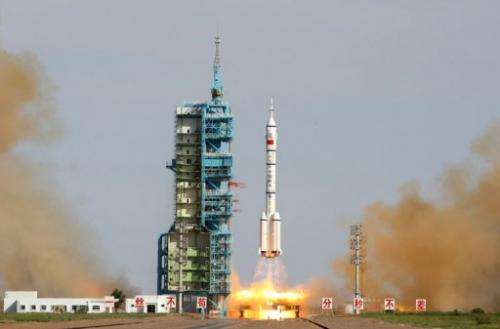China's Shenzhou-10 rocket blasts off from the Jiuquan space centre in the Gobi Desert, in Jiuquan, northwest China's Gansu province, on June 11, 2013. The spacecraft on Thursday carried out a successful docking, according to state media.
Three Chinese astronauts Thursday entered a space module after carrying out a successful docking manoeuvre, state media said, two days after the launch of the country's longest manned space mission.
The astronauts entered the Tiangong-1 space module at 0817 GMT, almost three hours after their spacecraft Shenzhou-10 had linked up with the space laboratory in an "automated docking", Xinhua said, citing the Beijing Aerospace Control Center.
The three—who include China's second woman in space—are spending 15 days in orbit as the country's ambitious space programme reaches another milestone.
The docking procedure was the fifth to take place between Shenzhou-type spacecraft and the space module, Xinhua said.
Two automated operations were carried out by the unmanned Shenzhou-8 in 2011 and both an automated and manual docking by the manned Shenzhou-9 in 2012.
Last year's manual docking, China's first, tested a technique that is needed to be able to construct a space station, which China aims to do by 2020.
Beijing sees the multi-billion-dollar space programme as a symbol of its growing global stature and technical expertise, and of the ruling Communist Party's success in turning around the fortunes of the once poverty-stricken nation.
© 2013 AFP






















